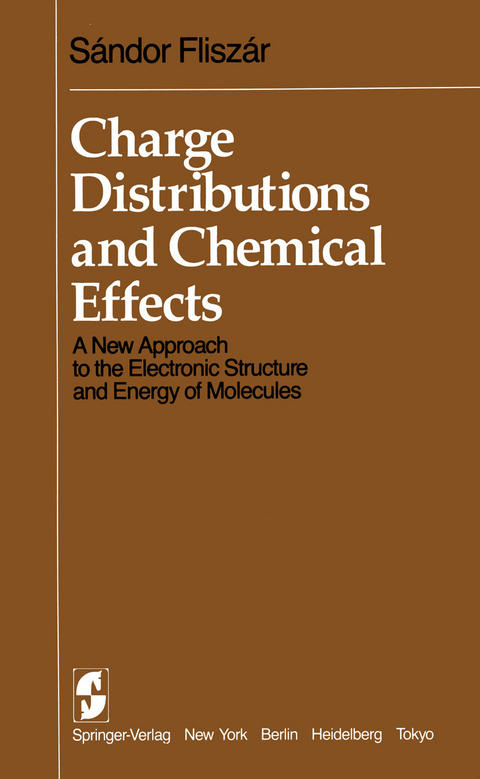
Charge Distributions and Chemical Effects
Springer-Verlag New York Inc.
978-1-4612-5577-2 (ISBN)
1 Electronic Charge Distributions.- Electron Population Analysis.- Basis Functions.- 2 Charge Analysis of Simple Alkanes.- Inductive Effects of Alkyl Groups.- Back-Calculation of Atomic Charges from the Inductive Effects.- Comparison with Theoretical Population Analyses.- Conclusions.- 3 A Modified Population Analysis.- Criterion for Selecting a Theoretical Method for the Study of Molecular Properties Involving Charges.- A Modified Population Analysis.- Numerical Comparisons of Atomic Charges.- The “Most Even Electron Distribution”.- On the Precision of Theoretical Charges.- Inductive Effects and Charge Distributions.- Conclusions.- 4 Charge Analyses Involving Nuclear Magnetic Resonance Shifts.- Relationships between Nuclear Magnetic Resonance Shifts and Atomic Charges.- Charge-Shift Relationships Involving sp2 Carbon Atoms.- Relationships Involving sp3 Carbon Atoms.- Relationships Involving Oxygen Atoms.- Charge Analyses.- Conclusions.- 5 The Molecular Energy, A Theory of Electron Density.- The Molecule in its Hypothetical Vibrationless State.- Energy Components in Isolated Atoms.- Relationships between Electronic, Orbital, and Total Energies in Molecules.- Binding of an Atom in a Molecule.- Non-Transferability of Bond Energy Terms.- Charge Dependence of Chemical Binding.- Evaluation of the aij Parameters.- Physical Interpretation of the aij Parameters.- Summary.- 6 Energy Analysis of Saturated Hydrocarbons.- The Boat and Chair Forms of Cyclohexane.- General Formulas for Saturated Hydrocarbons.- Definition of Charges Satisfying Eqs. 5.46–5.48.- Numerical Applications: Saturated Hydrocarbons.- Nonbonded Interaction Energies.- Approximate ?Em2Calculations of Saturated Hydrocarbons.- Conclusions.- 7 On the Role of Vibrational Energies.- Outline of Calculations.-Noncyclic Alkanes.- Cycloalkanes.- Ethylenic Hydrocarbons.- Carbonyl Compounds.- Ethers.- On the Quasi-Additivity of Vibrational Energies.- Ring Strain and Vibrational Energies.- Summary.- 8 Unsaturated Hydrocarbons.- Energy Formula for CnH2n Olefins.- Numerical Applications: CnH2n Olefins.- Bond-by-Bond Calculation of Olefins.- Exo- vs. Endocyclic Double Bonds.- Dienes, Allenes, Alkynes and Benzene.- Conclusions.- 9 Energy Analysis of Oxygen-Containing Compounds.- Charge Normalization.- Ethers.- Carbonyl Compounds.- Conclusions.- 10 Conclusion and Assessment.- Charge Distributions.- Molecular Energies.- Appendix Summary of Final Equations and Input Parameters.- Author Index.
| Zusatzinfo | 205 p. |
|---|---|
| Verlagsort | New York, NY |
| Sprache | englisch |
| Maße | 155 x 235 mm |
| Themenwelt | Naturwissenschaften ► Biologie ► Biochemie |
| Naturwissenschaften ► Chemie ► Physikalische Chemie | |
| Naturwissenschaften ► Physik / Astronomie ► Atom- / Kern- / Molekularphysik | |
| Schlagworte | Bindungsenergie • Ladungsverteilung |
| ISBN-10 | 1-4612-5577-5 / 1461255775 |
| ISBN-13 | 978-1-4612-5577-2 / 9781461255772 |
| Zustand | Neuware |
| Haben Sie eine Frage zum Produkt? |
aus dem Bereich


